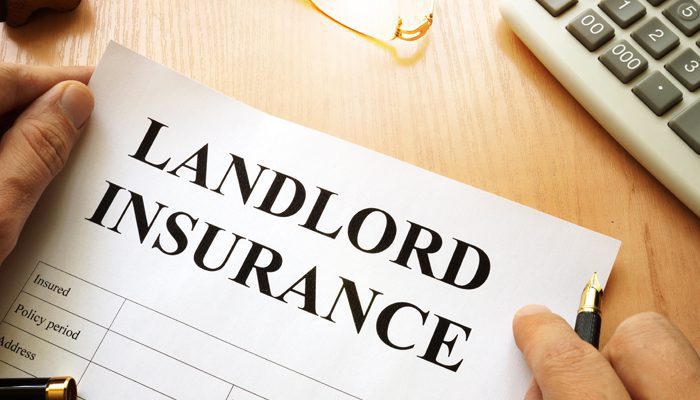Preparing for a new tenant can be time-consuming and stressful. As well as making sure your property is attractive and comfortable, you must also meet an increasing number of legal requirements.
Laws such as the Furniture and Furnishings (Fire Safety) Regulations 1988 and the Housing Act 2004 ensure all privately rented properties, UK-wide, meet acceptable safety and hygiene standards.

© Vitalii Vodolazskyi / Shutterstock.com
Further legislation applies in the home nations: including the Scottish Housing Quality Standard 2004; the Private Tenancies (Northern Ireland) Order 2006; and the Welsh Housing Quality Standard 2002.
Considering the multiple aspects of letting a landlord needs to consider, being well-organised is the key. The question is where do you start?
Furniture and furnishings
Providing high-quality furniture and furnishings will attract more tenants, as it means they can move in quickly, without the hassle and expense of taking their own furniture.
All the upholstered furniture you provide, including sofas, chairs and beds, must meet fire safety regulations – they will need a “fire resistant” label.
Loose furniture and upholstery, including curtains, bed covers and carpets, aren’t covered by the regulations, but it’s crucial to make sure everything you provide is fire safe.
Any items the tenant brings to the property aren’t covered by these regulations, but it’s useful to discuss fire safety with them when they move in.
Electrical safety regulations
Landlords must comply with the Electrical Safety Standards in the Private Rented Sector (England) Regulations, introduced in 2020. The law requires electrical safety checks to be carried out by a registered trades person at least once every five years.
The landlord must provide a copy of the Electrical Installation Condition Report to new tenants. Professional electricians must check fuse boxes, sockets and wiring, look for overloaded installations, check for any potential fire hazards and make sure there are no electric shock risks.
Landlord licensing laws
If you’re changing your existing property into an HMO, check with your local authority whether you need a licence. Landlords of HMOs have extra responsibilities. Your local council’s website will list the different requirements for licensing and explain whether you need one.
An HMO must be licensed, by law, if it’s occupied by five or more people. However, a council can also include other types of HMOs in its local licensing scheme.
Energy efficiency rules
Make sure your property has its Energy Performance Certificate. It lasts for ten years and outlines the energy efficiency of the property and how to reduce bills. Give a copy to the new tenants when they move in. You can be fined for failing to do so.
Landlords must ensure the energy efficiency of their property is no lower than the minimum level, EPC band E.
Gas safety certificate
You must also carry out a gas safety check once a year and have a valid gas safety certificate to give to your new tenants. Similar to the electrical checks, it must be done more frequently.
Every gas appliance in your rental property needs to be safe certified annually. If you fail to comply with the requirements, you will face a hefty fine, and put tenant safety at risk.
Smoke alarms
Smoke alarms and carbon monoxide detectors in rental properties are a legal requirement. Landlords must have at least one smoke alarm on each floor.
There must also be a carbon monoxide detector in any room containing a solid fuel burning appliance, including a coal fire or a wood burning stove. You must test all alarms before the start of the new tenancy.
Landlord insurance
If you have a buy-to-let mortgage, your lender will almost certainly want you to have landlord insurance. Standard insurance is unlikely to be adequate.
Make sure you have the relevant landlord insurance policy in place before the new tenants move in – this should cover the building and your furniture. The tenant is responsible for insuring any property they bring with them.
Screen prospective tenants
Once you advertise your property and receive applications, screen them properly before making a decision. It’s usual to ask for references from their previous landlord.
Some landlords carry out credit checks with credit reference agencies, as letting to a tenant who has run up debts, paid rent late, or fallen into payment arrears in the past isn’t advisable.
It’s also a legal requirement to check prospective tenants’ immigration status to make sure they have the legal right to rent a home in the UK.
Tenancy agreement
Once you’ve found your tenants, draw up a tenancy agreement and get them to sign on the dotted line. Make sure you include all the conditions of the tenancy – when the tenancy starts and how long it lasts; when the rent is due and how much it is; your own contact details; and the responsibilities of the landlord and the tenants.
Deposit protection
When you ask for a deposit from your new tenants, it must be protected by a government-approved scheme. This applies to assured shorthold tenancies. The schemes in existence offer two types of deposit protection: insured and custodial.
The custodial scheme requires the landlord to put the deposit in the care of the government-approved deposit protection company. They hold it till the end of the tenancy.
The insured scheme requires the landlord to pay the deposit protection company a fee to insure the deposit. Make sure you understand how each alternative works and decide which best suits you.
Failure to adapt accordingly for a new tenant can have serious consequences, ranging from getting a bad reputation as a landlord to more serious effects, including damage to the property and potential safety hazards.
